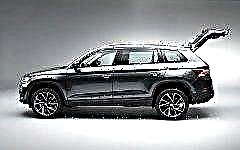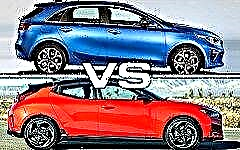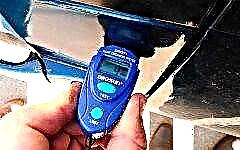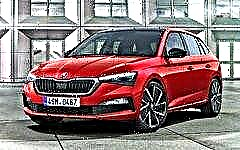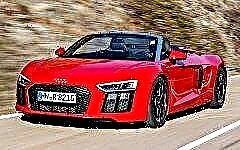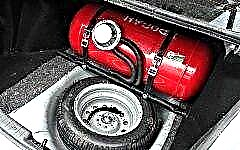
The constant rise in prices for products of the oil refining industry makes car owners look for alternative solutions. Among them - the installation of LPG on cars with gasoline engines. But this upgrade has both advantages and disadvantages. Therefore, before installing gas equipment, you should weigh all the pros and cons, as well as familiarize yourself with the possible nuances of the upcoming alteration.
Key advantages of HBO

To refuel cars with LPG, 2 types of gas are used:
- liquefied petroleum (propane-butane composition);
- compressed (compressed) - methane.
Due to the different pressure indicators during transportation and storage of fuel, units for vehicles differ in their device. Moreover, the principle of their action is almost identical.
1. Fuel cost and extended range
The main argument in favor of converting a gasoline car for LPG is the economic component. The average cost of propane is 55-60% lower than the cost of gasoline. Methane is 60-65% cheaper. Price tags may vary depending on regional specifics.
The final cost of re-equipment of a budget car with a 4-cylinder power plant and a power reserve of up to 150 liters. with. for propane LPG is 35-50 thousand rubles. An identical system designed for the use of methane costs about 50-65 thousand rubles, which is associated with the high cost of the storage tank. Equipping a car with more powerful motors will cost more.
Therefore, if you want to get instant savings, you should carefully evaluate all financial investments for the purchase, installation, design and maintenance of equipment. With insignificant runs per month / year, the payback period of the equipment will be seriously delayed. To justify the costs, the car needs to travel at least 1500 km per month with fuel consumption of 10 l / 100 km. To calculate the payback, you can use special calculators.
An equally important advantage of LPG equipment is the increased power reserve, which is associated with the possibility of using 2 modifications of "blue fuel". This is especially important for long journeys and travel on unstable roads.
2. Correct functioning and working life of the internal combustion engine

Methane and propane have a higher octane rating than gasoline (about 105-110), which reduces knocking loads and contributes to smooth engine operation. In addition, the gas burns more evenly, since it forms a fuel-air mixture faster and better, reducing the negative effects on the cylinders and pistons. This feature reduces mechanical noise and vibration from the motor.
During the combustion process, a small amount of waste is generated. This means that the installation of LPG reduces the intensity of engine oil contamination with impurities and abrasive particles, and also extends the service life of important components of the power unit.
Since the modification eliminates the effect of washing off the oil film from the surface of the cylinders, this has a positive effect on the operational term of the cylinder-piston group.
Burning gas takes longer than burning gasoline. In addition, the process is carried out at a high temperature, which increases the risk of valve burnout. But competent adjustment of gas equipment and installation of the UOZ variator completely eliminates such troubles.
3. Environmental friendliness
It is no secret that gas is an environmentally friendly fuel with negligible environmental impact. This makes it an indispensable source of energy, especially in large settlements with an abundance of vehicles and people.
The composition of the exhaust gases that are released during the combustion of LPG / CNG contains 10 times less toxic substances than gasoline or diesel fuel. In addition, this feature reduces the negative impact on the catalyst and exhaust system.
For individual administrative centers of the Russian Federation, reduced taxes are provided for cars with gas equipment.
4. Security

The most common mistakes that can trigger an explosion include:
- installation of used cylinders that have expired or have not been re-inspected in time;
- non-compliance with the basic rules for the installation and maintenance of equipment;
- Purchase of uncertified, inferior or obsolete system parts;
- deviation from the terms of maintenance of the unit.
If such errors are not allowed, the explosion hazard of gas equipment is reduced to almost zero. The 4th generation systems have progressive protection against such incidents, which eliminates the risk of accidents.
The main disadvantages of installing HBO
But besides important advantages, gas equipment on a car also has disadvantages. It is important to analyze them before redesigning your vehicle's fuel system.
1. Reducing the useful volume of the luggage compartment

An important nuance that repels many car owners from using LPG is the lack of a special space in the car for placing a tank with fuel. The installation of cylinders inevitably leads to a decrease in free space in the trunk. The problem is exacerbated on many passenger cars, where there is no way to fix the container under the bottom of the body.
To partially solve this problem, toroidal propane cylinders are used, which are placed in the spare wheel well. But in this case, you will have to refuse to transport the spare wheel or keep it in the trunk all the time, which is also accompanied by discomfort.
In addition, the placement of the cylindrical reservoir in the trunk excludes the possibility of free transformation of the rear row of seats. In cars with a hatchback or station wagon, this feature is highly undesirable.
On the convenience of the layout, the LPG is optimally suited for commercial vehicles. In buses or trucks, there are places for fixing the cylinders outside the useful area in the cabin (behind the cab, on the frame, etc.). Moreover, the weight of such products in relation to the weight of a car is much less than in passenger models.
2. Increase in vehicle weight
An average cylinder (without gas) with a volume of 50 liters weighs about 30-31 kg. Cylindrical tanks with the same capacity are slightly lighter - 20-21 kg. At the same time, thick-walled containers for methane are heavier, since the CNG fuel is under a pressure of 200 atmospheres, and the propane-butane mixture is 12-15.
Therefore, an empty methane cylinder will weigh about 60 kg, and a tank will weigh 40-42 kg. Undoubtedly, there are also lightweight modifications of containers on sale, but there are still discussions about their reliability.
In addition to the fact that the cylinders themselves have an impressive weight, other components of the LPG also exert an additional load on the chassis elements. Excessive weight reduces the vehicle's carrying capacity, which is a critical issue for commercial vehicles.
3. The need to register equipment

Taking into account the technical regulation "On the safety of vehicles" (TR CU 018/2011), which was installed and published in 2015, the conversion of a car to the LPG system is a change in the internal structure of the vehicle and is accompanied by the need to re-register the car.
The equipment registration process consists of several stages and takes a long period of time. All investments in the legalization of the system are also included in the group of expenses.
4. Associated costs
If you think that you can put HBO and forget about it forever, this is a deep misconception.The system needs to be serviced regularly to keep it economical and trouble-free.
Most drivers combine the maintenance of LPG equipment with routine vehicle maintenance. The interval between visits to services is reduced to 10-15 thousand kilometers. The exact time span is determined by the quality of the fuel used.
During maintenance, it is necessary to carry out:
- replacement of filters;
- diagnostics, search and solution of possible problems associated with gas leaks;
- checking the serviceability of the internal combustion engine and gas equipment;
- adjustment of nozzles.
For HBO generation 1-2, it is necessary to periodically drain the accumulated condensate in the gear unit. Like other units, HBO have a declared operational resource, so if it comes to an end, you need to replace or repair the components. In most cases, work is reduced to replacing rubber components (seals, lines, gearbox diaphragm).
5. Negative effect on the car engine

Prolonged and intensive operation of vehicles with LPG equipment impairs vehicle dynamics by 5-15%. Such a nuisance is perceptible only on engines with a small volume. Medium and high power versions do not have this problem. Therefore, in the case of the correct choice, installation and adjustment of the equipment, the loss of dynamism and negative damage to the motor will be minimized.
Gas filling stations are less common than petrol and diesel ones. At the same time, the lack of propane gas filling stations occurs only in sparsely populated villages or between remote settlements.
Recently, there has been a positive trend towards expanding the network of filling stations. This is facilitated by the absence of the need for multi-million dollar investments in the construction of the station.
The situation with gas filling compressor systems is slightly worse. There are far fewer vehicles with methane equipment than with propane equipment. Most of these vehicles are commercial vehicles. And for the construction of a CNG filling station, impressive financial investments are needed. Therefore, it is almost impossible to refuel with methane on a highway or in a small village.
In addition, the process of filling a cylinder with compressed methane is time-consuming.
Basic rules for caring for gas equipment in a car

Despite the fact that the 4th generation LPG system works in automatic mode, some actions on the part of the driver are inevitable. They will extend the service life of the engine and other vehicle components.
For example, in order for the engine to work correctly, and the reducer-evaporator was not damaged, the power unit must be started only on gasoline. This requirement takes on special meaning in conditions of subzero temperatures outside. The 2nd generation of LPG is equipped with the option of forced start of the engine on gas.
To keep the injectors and the fuel pump operational, you need to monitor the presence of fuel in the tank. Otherwise, without proper lubrication and cooling, parts will be damaged.
When adjusting the parameters of LPG, it is necessary to set restrictions on high rpm, since with such indicators, "blue fuel" becomes ineffective. Attempts to overtake passing vehicles can lead to accidents.
In addition, you must not park a car with gas leaks in a closed parking lot or in a closed box.
Conclusion
So is it worth equipping the car with LPG, or is it better to abandon such an alteration? With all the advantages and disadvantages, LPG is a good option for reducing fuel costs. But it is rational to install it with impressive runs, since with periodic driving around the city, such investments will not justify themselves.

|| list |
- Key advantages of HBO
- Fuel cost and extended range
- Correct functioning and working life of the internal combustion engine
- Ecological cleanliness
- Security
- The main disadvantages of installing HBO
- Reducing the useful volume of the luggage compartment
- Increase in vehicle weight
- The need to register equipment
- Associated costs
- Negative effect on the car engine
- Basic rules for the care of equipment



